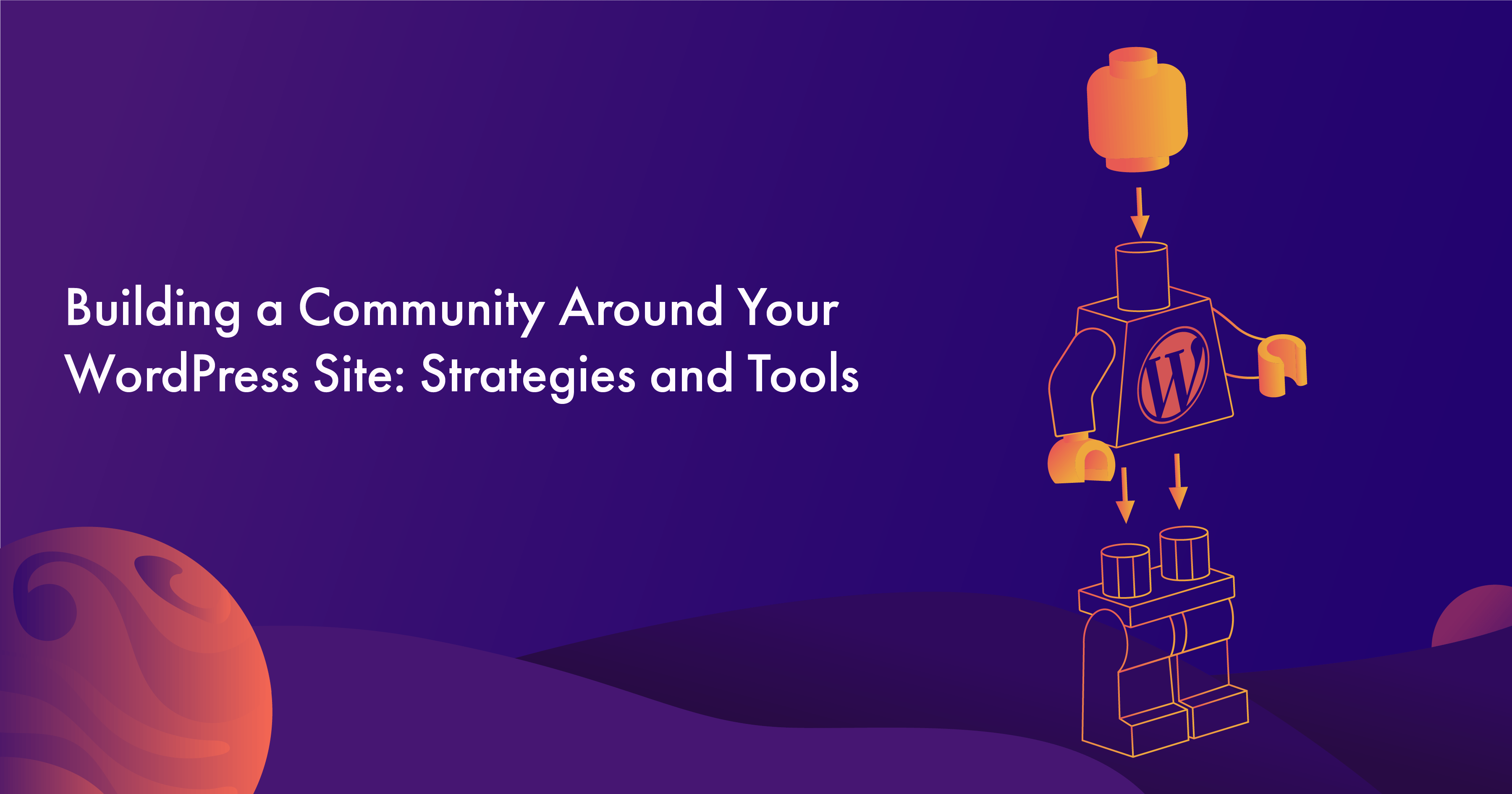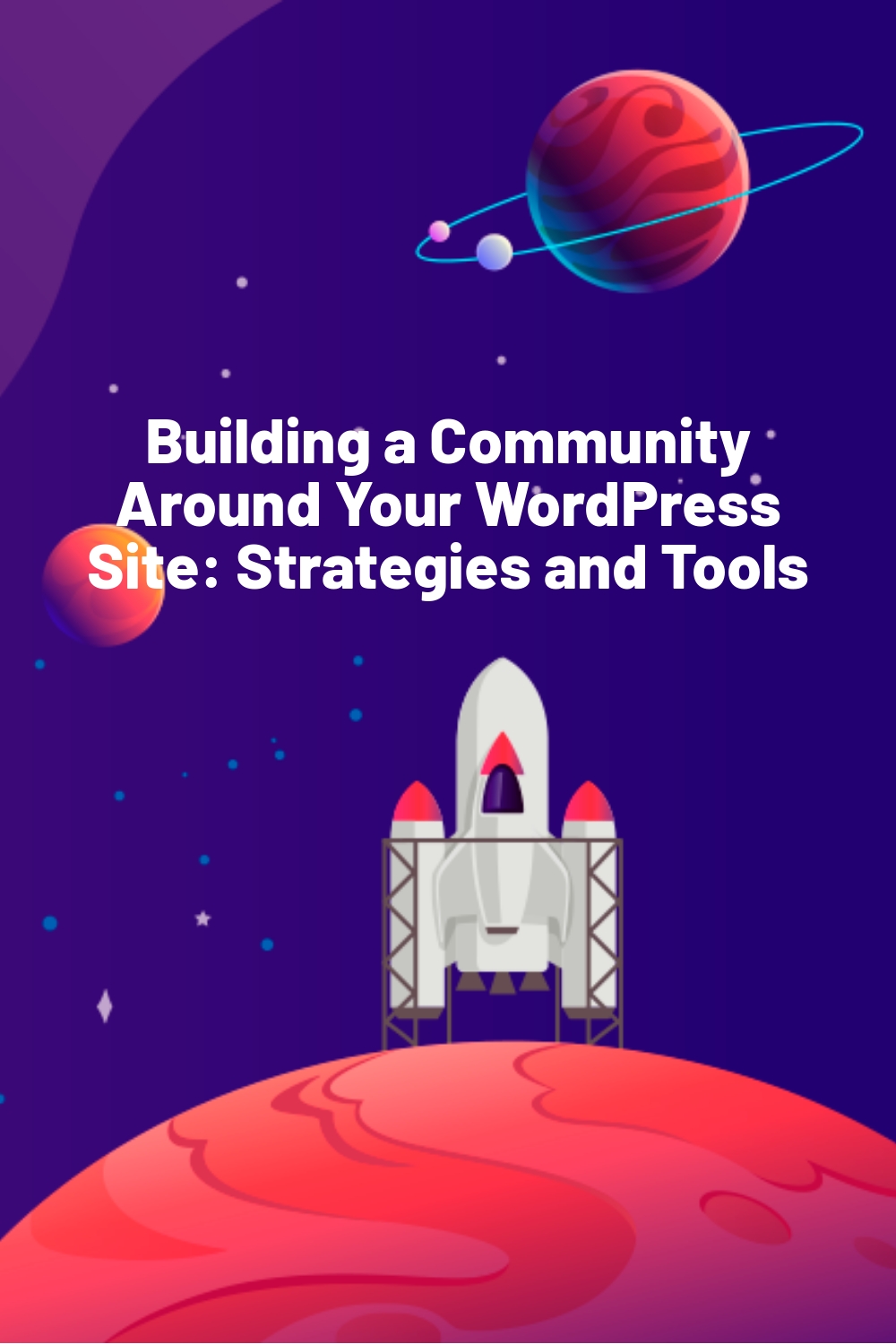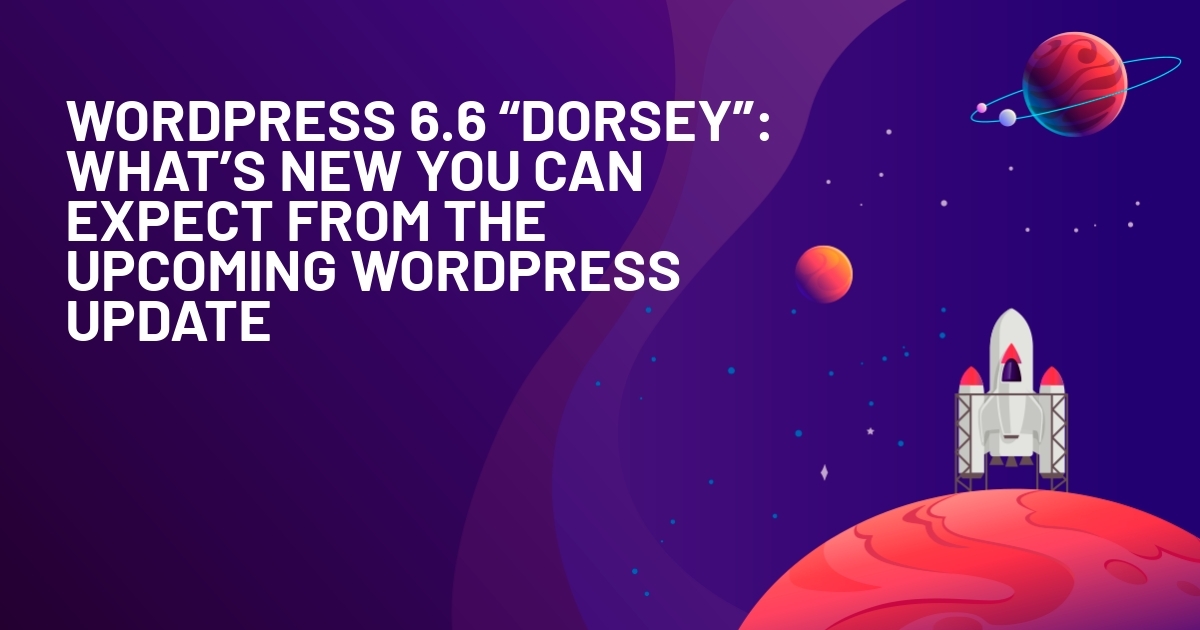WPLift is supported by its audience. When you purchase through links on our site, we may earn an affiliate commission.
Building a Community Around Your WordPress Site: Strategies and Tools

Many websites are more than just storefronts or information hubs; they’re the heart of a successful online presence that beats in the vibrant communities that form around them. For WordPress site owners, building and nurturing this community is not just beneficial; it’s essential for long-term success. But how does one transform a simple WordPress site into a thriving, interactive community?
This article delves into the art and science of community building, specifically for WordPress websites. We’ll explore a range of strategies and tools designed to not only attract visitors but to engage them deeply and foster a sense of belonging. From leveraging the robust functionality of WooCommerce to navigating the nuances of content management, we’ll cover all the essential aspects.
Whether you are running an eCommerce platform, a content-rich blog, or a hybrid site, understanding the dynamics of community building can transform your WordPress site into a living, breathing ecosystem that grows with your audience. Join us as we unfold the blueprint for building a thriving community around your WordPress site, where every tool and strategy contributes to a more engaged, loyal, and vibrant user base.
Setting the Foundation for Your WordPress Community
Building a strong community around your WordPress site begins with laying the right foundation. This foundation consists of choosing a community plugin and theme that not only resonates with your brand identity but also facilitates community engagement and interaction.
1. Choosing the right theme:
- User-friendly design: Select a community website theme that offers a clean, intuitive layout. This makes navigation easier for your users, encouraging them to explore more content and interact with your site.
- Responsive design: Ensure the theme is responsive, as a significant portion of web traffic comes from mobile devices. A mobile-friendly site invites more users to engage, regardless of the device they use.
2. Essential plugins for community building:
- Interactive plugins: Incorporate plugins that enable forums, social sharing, and commenting. These features are the building blocks of community interaction.
- WooCommerce integration: For eCommerce sites, WooCommerce is a powerful tool. Utilize its features, like creating a waitlist for products, which not only helps in inventory management but also builds anticipation and engagement among your users.
3. Streamlining user experience:
- Navigation and accessibility: Ensure that the site’s navigation is straightforward and important sections are easily accessible. This reduces user frustration and encourages prolonged engagement.
- Fast loading times: Use caching plugins and optimize images to ensure your site loads quickly. Slow-loading sites can deter users from engaging further.
4. Creating a safe and engaging environment:
- Spam management: Implement robust anti-spam measures to keep your comment sections clean. Plugins like Akismet can help filter out spam, maintaining the quality of user interactions.
- Content moderation: Establish clear guidelines for content submissions and comments. Tools that enable you to review and approve user-generated content before publishing are essential in maintaining the integrity of your site.
By focusing on these foundational elements, you set the stage for a WordPress site that’s not just aesthetically pleasing and functional but also primed for fostering a dynamic and engaged community. This foundation is crucial for the more advanced community-building strategies and tools we will explore in the following sections.
Enhancing User Engagement Through Interactive Features
Enhancing user engagement on your WordPress site involves incorporating forums and comment sections, providing platforms for discussions and relationship building. Effective management of these areas is crucial, involving advanced spam filters and regular moderation to maintain discussion quality.
Encouraging user-generated content, from guest blog posts to user reviews, is essential. Implement a system for approving this content, with clear guidelines and review processes to ensure alignment with your site’s values and standards.
Leverage social media to broadcast content and provide additional interaction channels for your community. Integrate dynamic content forms like webinars and podcasts for a more personal engagement method, offering knowledge sharing, product showcases, or entertainment.
Implement an influencer marketing strategy to amplify your efforts. Collaborations with brand-aligned influencers can introduce your site to new audiences and add credibility. Influencers participating in webinars or contributing content can bring their followers, enhancing community growth and diversity.
Building Trust and Loyalty with Effective Communication Tools
Building trust and loyalty within your WordPress community relies on effective communication tools and strategies as part of providing an exceptional customer experience. In fact, 88% of branded communities agree that their community improved customer experience.
These tools are essential for maintaining an open and ongoing dialogue with your audience.
1. Newsletters and email campaigns: Send community members newsletters to regularly update them about new content, product launches, and community events. Email campaigns can be a powerful way to deliver personalized messages and offers, nurturing a sense of exclusivity and loyalty among subscribers.
2. Offering exclusive benefits: Reward your community members by offering exclusive content, discounts, or early access to products and services. These perks make your community members feel valued and appreciated, fostering a deeper connection.
3. WooCommerce features: If you’re using WooCommerce, make the most of its features to enhance communication. Notify customers on the waitlist when popular or exclusive products become available, creating excitement and a sense of belonging.
4. Credit memos for returns: In eCommerce, offering credit memos for returns can turn negative experiences into positive ones. It shows your commitment to customer satisfaction and can build trust in your brand.
Effective communication tools are not only about delivering messages but also about listening to your community. Encourage feedback and actively engage with comments, emails, and social media interactions. By maintaining a responsive and attentive presence, you demonstrate your commitment to the community’s needs and concerns.
Leveraging Social Media and Influencer Marketing
Social media is a powerful ally in community building for your WordPress site. It serves as both an extension of your website and an independent platform for engagement. By strategically leveraging social media, you can amplify your community-building efforts.
Start by integrating your WordPress site with social media platforms. This allows users to easily share your content, bringing more visibility to your site and attracting a broader audience. Encourage your community members to follow your social media profiles to stay updated and engaged.
Consistency is key on social media. Regularly post relevant content, such as blog articles, event announcements, and user-generated content. Engage with your followers by responding to comments, addressing questions, and fostering discussions. Building a responsive and interactive presence on social media is vital for community growth.
Influencer marketing is another potent strategy. Collaborate with influencers who align with your brand and resonate with your target audience. These influencers can introduce your WordPress site to their followers, potentially bringing in new community members. Whether it’s influencer-contributed content, shoutouts, or joint webinars, these partnerships can significantly enhance your community’s reach and credibility.
Remember that authenticity is crucial in influencer collaborations. Choose influencers who genuinely believe in your brand and are likely to engage with your community in a meaningful way.
Educating and Engaging Your Audience with Content Marketing
Content marketing is a cornerstone of community building for your WordPress site. It involves creating and sharing valuable content that not only educates your audience but also fosters engagement and loyalty.
Start by developing a content strategy that aligns with your community’s interests and needs. Identify topics that resonate with your audience and are relevant to your niche. Consistently producing high-quality content, whether in the form of blog posts, videos, or infographics, is essential for keeping your community engaged.
Consider the following strategies:
1. Blogging: Regularly publish informative and engaging blog posts that address common questions, challenges, or trends within your niche. Encourage discussions through comments and feedback.
2. Webinars and podcasts: Host webinars or podcasts on topics of interest to your community. These provide a platform for sharing knowledge, engaging with your audience in real time, and building expertise.
3. Guest posts: Collaborate with industry experts and influencers to contribute guest posts on your site. This not only diversifies your content but also brings in their followers, expanding your community.
4. Interactive content: Experiment with interactive content like quizzes, surveys, and polls to actively involve your community. This can provide valuable insights and drive engagement.
In essence, content marketing is about providing value, fostering engagement, and continuously educating and entertaining your community. A well-executed content strategy can be a driving force behind the growth and loyalty of your WordPress community.
Utilizing eCommerce Strategies to Enhance Community Engagement
eCommerce strategies play a significant role in enhancing community engagement on your WordPress site. These strategies are especially relevant for sites that sell products or services and aim to build a loyal customer base.
Two key approaches to take are:
- Balancing sales tactics with community building: While generating sales is essential, it’s equally important to strike a balance between sales-oriented strategies and community-building efforts. Focus on providing value to your community through informative content, exclusive offers, and personalized experiences.
- Personalization strategies: Implement personalization techniques to tailor the user experience for different community segments. This could involve recommending products based on user preferences, providing personalized content recommendations, or offering loyalty rewards to long-time community members.
By integrating eCommerce strategies that enhance community engagement, you can create a win-win situation where your community members not only make purchases but also feel more connected and loyal to your brand. Balancing sales tactics with community building ensures that your WordPress site serves both its business goals such as monetizing your community, and its community member’s needs.
Measuring and Analyzing Community Engagement
Measuring and analyzing community engagement on your WordPress site is a critical step in understanding how well your strategies are performing and identifying areas for improvement.
Here are a few tools and practices for effectively gauging the level of engagement within your community:
- Tools and metrics: Start by using analytics tools that are integrated with your WordPress site. These tools can provide valuable insights into user behavior, such as page views, time spent on the site, and click-through rates. Additionally, track specific engagement metrics like comments, likes, shares, and forum participation. These metrics give you a quantitative measure of how actively your community is participating.
- Feedback and surveys: Actively seek feedback from your community members through surveys or feedback forms. Understand their preferences, pain points, and suggestions for improvement. This qualitative data can be as valuable as quantitative metrics in gauging community sentiment.
- User segmentation: Segment your community based on various factors like demographics, behavior, and interests. This allows you to tailor your engagement strategies to different segments, ensuring that each group feels valued and engaged.
- Utilizing data for improvement: Regularly review the data and feedback collected. Identify trends and patterns that indicate areas of strength and areas that need attention. Use this information to refine your strategies, prioritize content topics, and enhance user experiences.
- Continuous improvement: Community engagement is an ongoing process. Continuously test and adapt your strategies based on the insights gained from data analysis and feedback. This iterative approach ensures that your community engagement efforts remain relevant and effective.
By actively measuring, analyzing, and adapting your community engagement strategies, you can ensure that your WordPress site evolves in a way that resonates with your audience. Effective data utilization not only helps you maintain a thriving community but also contributes to the long-term success of your site.
Maintaining a Safe and Inclusive Community Environment
A critical aspect of community building is the maintenance of a safe and inclusive environment for all members. Here’s how you can ensure that your WordPress community remains welcoming and respectful is essential for its long-term success:
- Guidelines and policies: Establish clear and comprehensive community guidelines and policies that outline acceptable behavior and content standards. These guidelines serve as the foundation for a respectful atmosphere within your community.
- Content moderation: Implement content moderation tools and mechanisms to filter out any offensive or inappropriate content. Regularly review and address flagged content to maintain the quality and appropriateness of discussions.
- User reporting: Provide a straightforward and confidential system for community members to report any violations of guidelines or instances of inappropriate behavior. Promptly address and resolve reported issues to build trust.
- Cultivate a supportive culture: Foster a culture of support and inclusivity within your community. Encourage members to assist each other, offer constructive feedback, and embrace diverse perspectives. Lead by example through respectful interactions.
- Community engagement: Stay actively engaged with your community by responding to comments, addressing concerns, and participating in discussions. Your responsive presence as a site owner sets a positive tone for respectful behavior.
- Educational initiatives: Offer resources and educational materials on topics such as online etiquette and digital citizenship. Empowering community members with knowledge helps them understand their roles and responsibilities in maintaining a respectful environment.
- Diversity and inclusion: Promote diversity and inclusion within your community. Encourage participation from individuals with different backgrounds, experiences, and viewpoints. A diverse community enriches discussions and promotes learning.
By prioritizing a safe and inclusive community environment, you create a space where members feel valued, respected, and eager to engage. This, in turn, contributes to the growth and vibrancy of your WordPress community over time.
Scaling Your Community
Scaling your WordPress community is a pivotal step in its evolution. To achieve sustainable growth, focus on strategies like encouraging organic expansion through referrals and partnerships, optimizing for search engines, and diversifying your content offerings. Gathering user feedback and data analysis will guide your decisions, ensuring that you meet the evolving needs of your community while preserving engagement.
Exploring new platforms and technologies can broaden your reach, but don’t forget the importance of maintaining a personal touch. Engage with community members, respond to their comments, and actively participate in discussions to foster a sense of belonging as your community continues to grow. Scaling your community requires a delicate balance between expansion and retention, ensuring that both new and existing members continue to find value and connection within your WordPress site.
Conclusion
In the process of community building for your WordPress site, you’ve explored a diverse range of strategies and tools. From setting the right foundation and enhancing user engagement to building trust through effective communication, leveraging social media, and scaling sustainably, you’ve built a comprehensive toolkit.
Remember that building a thriving WordPress community is an ongoing commitment. By implementing these strategies and tools, you’re well-prepared to create an engaged and valuable community that benefits both your site and its members. Continue to adapt, listen to your community, and nurture meaningful connections as you embark on this rewarding journey of community building.








